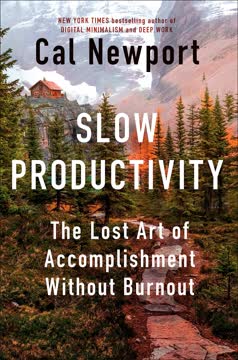つの重要なポイント
1. イノベーションは相互接続された環境で繁栄する
ポアンカレが言ったように、アイデアは群衆の中で生まれる。それは、保護よりも接続が重視される液体ネットワークで生まれる。
イノベーションのエコシステム。 自然界、都市、デジタル世界のいずれにおいても、最も革新的な環境は共通の特徴を持っている。それらは密に相互接続されており、情報やアイデアの自由な流れを可能にする。これらの環境は、偶然の出会いや予期しない接続を促進し、新しい組み合わせやブレークスルーを生み出す。
革新的な空間の例:
- サンゴ礁: 複雑な相互依存関係を持つ非常に多様なエコシステム
- 都市: 歴史を通じて人間の創造性と発明の中心地
- インターネット: 前例のない情報共有とコラボレーションを可能にするグローバルネットワーク
これらの環境の鍵は、多様な要素間の接続を促進し、アイデアが衝突し、結合し、急速に進化する「液体ネットワーク」を作り出す能力にある。
2. 良いアイデアは小さな直感の衝突から生まれる
新しいアイデアは、あなたの心の中で接続できる隣接可能性を探る細胞のネットワークである。
アイデアのネットワーク性。 偉大なイノベーションは、単一の「ユーレカ」モーメントの産物であることは稀である。むしろ、それらは小さな洞察や「直感」の漸進的な蓄積と結合の結果であることが多い。これらの部分的なアイデアは、時間と適切な環境を必要とし、補完的な直感と接続することで、最終的に完全なブレークスルーを形成する。
革新的な思考の特徴:
- 新しい接続や連想への開放性
- 複数のアイデアを同時に保持する能力
- 直感が発展し成熟するための忍耐
このプロセスは脳内でも反映されており、ニューロンのネットワークが新しいアイデアを表現するために新しい接続を形成する。多様な興味を持ち、さまざまな情報に触れることで、直感が生産的に衝突する可能性が高まる。
3. セレンディピティはブレークスルー発見において重要な役割を果たす
セレンディピティは確かに幸運な事故から成り立っているが、それを幸運にするのは、あなたにとってその発見が意味のあるものであるという事実である。
セレンディピティの育成。 セレンディピティな発見はランダムに見えるかもしれないが、それらはしばしば意味のある事故の可能性を高める環境を作り出すことから生じる。これらの環境は探求、多様な入力、そして潜在的に価値のある接続を認識する能力を奨励する。
セレンディピティを増やす方法:
- 多様な読書と情報消費
- 学際的なコラボレーションとネットワーキング
- 構造化されていない思考のための時間と空間の確保
- 新しい経験と視点の受け入れ
セレンディピティは単なる偶然の出会いではなく、予期しない接続を認識し活用する準備ができていることに関するものである。知識を広げ、新しい可能性に対して開かれた状態を保つことで、変革的な洞察に出会う可能性が高まる。
4. エクサプテーション: 古いアイデアを新しい用途に再利用する
新しいアイデアは群島では繁栄しない。
再利用の力。 エクサプテーション、すなわち既存の特性やアイデアを新しい機能に再利用するプロセスは、イノベーションの主要な推進力である。多くのブレークスルーアイデアは、完全に新しいものを発明するのではなく、既存の概念や技術を新しい領域に創造的に適用することから生まれる。
エクサプテーションの例:
- グーテンベルクの印刷機: ワインプレス技術を印刷に適用
- 羽毛: 元々は断熱のために進化し、後に飛行に適用
- GPS: 軍事技術を民間のナビゲーションに再利用
エクサプテーションは、異なる分野や産業間の交差受粉の重要性を強調している。多様なアイデアや技術に触れることで、新しい接続を作り出し、既存のソリューションに対する予期しない応用を見つける能力が高まる。
5. エラーとノイズはイノベーションの重要な要素である
正しいことはあなたをその場に留める。間違うことはあなたを探求に駆り立てる。
ミスの生成力。 エラーや予期しない結果は、新しい発見やイノベーションにつながることが多い。精度と正確さは重要であるが、あまりにも制御された環境やエラーのない環境は、創造性を抑制し、新しい可能性の探求を制限することがある。
エラーを受け入れる利点:
- 仮定の再評価を促す
- 代替説明の探求を奨励する
- セレンディピティな発見につながることがある
生物進化や人間のイノベーションの両方において、ある程度の「ノイズ」や変動が進歩のために必要である。これは、最も革新的な企業や研究所がプロセスにランダム性の要素を意図的に導入したり、計算されたリスクを奨励したりする理由である。
6. 隣接可能性の力がイノベーションを拡大する
隣接可能性は、現在の状態の縁に浮かぶ一種の影の未来であり、現在が再発明できるすべての方法の地図である。
可能性の拡大。 「隣接可能性」の概念は、現在存在するものから一歩離れた潜在的なイノベーションのセットを表している。各新しいイノベーションは新しい可能性を開き、潜在的なブレークスルーの連鎖効果を生み出す。
隣接可能性の特徴:
- 現在の知識と技術によって制約される
- 各新しい発見や発明とともに拡大する
- 生物学的および技術的進化の方向を導く
隣接可能性を理解することで、イノベーターは実現可能な次のステップに焦点を当てると同時に、自分たちの仕事の長期的な可能性を認識することができる。これは、漸進的な改善と、まったく新しい可能性の領域を開くより急進的なイノベーションのバランスを奨励する。
7. 液体ネットワークはアイデアの流れと結合を促進する
チャンスは接続された心を好む。
接続性の重要性。 液体ネットワークは、都市、組織、デジタルプラットフォームのいずれであっても、アイデアが自由に流れ、新しい方法で再結合することを可能にする。これらのネットワークは、アイデアが根付くための安定性と、ブレークスルー接続につながるランダム性のバランスを取っている。
液体ネットワークの特徴:
- 多様な要素間の密な相互接続
- 情報が多方向に流れる能力
- 秩序と無秩序のバランス
液体ネットワークの例には、以下が含まれる:
- 多様な産業と人口を持つ革新的な都市
- オープンソースソフトウェアコミュニティ
- 学際的な研究チーム
これらのタイプの環境を育成することで、イノベーションのペースを加速し、変革的なブレークスルーの可能性を高めることができる。
8. ゆっくりとした直感: 偉大なアイデアは時間をかけて進化することが多い
ユーレカモーメントは稀である。多くの場合、直感は進化するために時間を必要とし、真に強力なものに形作られる。
イノベーションにおける忍耐。 突然の閃きを祝うことが多いが、多くの画期的なアイデアは長期間にわたってゆっくりと発展する。これらの「ゆっくりとした直感」は成熟するために時間を必要とし、しばしば他のアイデアや経験と接続することでその完全な可能性に達する。
ゆっくりとした直感を育む:
- 多様な興味と入力を維持する
- アイデアをキャプチャし再訪するためのシステムを作る
- 反省と熟成のための時間を確保する
- 予期しない接続に対して開かれた状態を保つ
ゆっくりとした直感の例には、ダーウィンの進化論やティム・バーナーズ=リーのワールドワイドウェブの開発が含まれる。これらのアイデアは何年もかけて進化し、さまざまな影響や経験を取り入れて最終形に達した。
9. プラットフォームとオープンネスはイノベーションを加速する
プラットフォームはゴミ、廃棄物、放棄された物品に対して自然な食欲を持っている。
オープンシステムの力。 広範な参加とアイデアの再結合を許すプラットフォームは、閉鎖的なシステムよりも革新的である傾向がある。これらのオープンプラットフォームは、アイデアが自由に共有され、構築され、再利用される環境を作り出し、迅速なイノベーションと予期しないブレークスルーをもたらす。
革新的なプラットフォームの特徴:
- 外部からの貢献に対する開放性
- 要素の再結合と再利用の能力
- 元の設計を超えた創発的な特性の創造
例には以下が含まれる:
- インターネットとワールドワイドウェブ
- オープンソースソフトウェアコミュニティ
- グローバル貿易における標準化されたコンテナ
オープンプラットフォームを作成しサポートすることで、大規模なグループの集合的な創造性を活用し、さまざまな分野でのイノベーションのペースを加速することができる。
10. 第四象限: 非市場型のネットワーク化されたイノベーション
政府が中央集権的な官僚機構ではなく、オープンプラットフォームとして自らを考えるほど、私たち全員、市民、活動家、起業家にとって良いことになる。
市場駆動型イノベーションを超えて。 市場の力がイノベーションを駆動することができる一方で、多くのブレークスルーアイデアは、大学、オープンソースコミュニティ、政府の研究プログラムなどの非市場型のネットワーク化された環境から生まれることが多い。これらの「第四象限」のイノベーションは、後に市場駆動型のイノベーションが構築できる基本的なプラットフォームをしばしば作り出す。
第四象限イノベーションの利点:
- 短期的な利益圧力からの自由
- 大規模で長期的な課題に取り組む能力
- 社会全体に利益をもたらす公共財の創造
第四象限イノベーションの例:
- インターネット(元々はDARPAによって開発された)
- ヒトゲノムプロジェクト
- 大学における基礎科学研究
これらの非市場型イノベーションの重要性を認識することで、市場と非市場のアプローチの強みを組み合わせたバランスの取れたイノベーションエコシステムをサポートする政策と投資を形作ることができる。
最終更新日:
FAQ
What's Where Good Ideas Come From about?
- Exploration of Innovation: The book explores how innovation and creativity emerge, focusing on the environments that foster these processes rather than attributing them to isolated genius.
- Seven Patterns of Innovation: Steven Johnson identifies seven key patterns that characterize innovative environments, such as the adjacent possible, liquid networks, and serendipity.
- Interconnectedness of Ideas: Johnson emphasizes that ideas are often built from existing concepts and thrive on connections between different fields and disciplines.
Why should I read Where Good Ideas Come From?
- Understanding Creativity: The book provides insights into the mechanisms of creativity, helping readers enhance their own innovative thinking.
- Practical Applications: Johnson’s exploration of innovation patterns can be applied across various fields, making it relevant for a wide audience.
- Engaging Narrative: The author uses historical examples and scientific research to support his arguments, making the content both informative and engaging.
What are the key takeaways of Where Good Ideas Come From?
- Importance of Environment: The book stresses that certain environments are more conducive to idea generation and innovation.
- Value of Collaboration: Johnson highlights the significance of collaboration and idea sharing, suggesting that innovation often occurs at the intersections of different fields.
- Embracing Error and Serendipity: Mistakes and unexpected discoveries are essential to the creative process, encouraging readers to embrace rather than fear failure.
What is the "adjacent possible" in Where Good Ideas Come From?
- Definition: The adjacent possible refers to the set of all potential innovations that can be realized based on the current state of knowledge and technology.
- Expanding Boundaries: As new ideas are explored, the boundaries of the adjacent possible expand, allowing for further innovations.
- Historical Examples: Johnson uses examples like Darwin's theories to illustrate how exploring the adjacent possible can lead to significant breakthroughs.
How does Where Good Ideas Come From define "liquid networks"?
- Characteristics: Liquid networks are environments where ideas and information flow freely, allowing for spontaneous connections and collaborations.
- Role in Innovation: These networks facilitate the exchange of ideas, making it easier for individuals to share and build upon each other's thoughts.
- Examples in Society: Johnson cites cities and the internet as prime examples of liquid networks that have historically fostered innovation.
How does Where Good Ideas Come From explain the concept of "exaptation"?
- Definition: Exaptation is the process by which a trait developed for one purpose is repurposed for a different function.
- Examples in Nature: Johnson uses examples from evolution, such as feathers originally evolving for insulation being later adapted for flight.
- Cultural Exaptations: The concept also applies to cultural innovations, where ideas from one field are adapted for use in another, leading to new breakthroughs.
What role does serendipity play in innovation according to Where Good Ideas Come From?
- Definition of Serendipity: Serendipity refers to unexpected discoveries that occur when individuals stumble upon new ideas or connections while exploring unrelated topics.
- Cultivating Serendipity: Johnson argues that creating environments that encourage exploration and randomness can lead to more serendipitous moments.
- Historical Examples: The book provides examples of famous discoveries made serendipitously, illustrating the importance of being open to unexpected outcomes.
What are the seven patterns of innovation identified in Where Good Ideas Come From?
- Overview of Patterns: The seven patterns include the adjacent possible, liquid networks, the slow hunch, serendipity, error, exaptation, and platforms.
- Interconnectedness of Patterns: Each pattern interacts with the others, creating a complex web of influences that shape the innovation process.
- Practical Implications: Understanding these patterns can help individuals and organizations create more effective environments for fostering creativity.
What are some notable quotes from Where Good Ideas Come From and what do they mean?
- "Good ideas are like the NeoNurture device.": This quote emphasizes that ideas are often built from existing components and require the right environment to flourish.
- "The adjacent possible is a kind of shadow future.": This highlights the idea that innovation is constrained by current knowledge but expands as new ideas are explored.
- "Environments that block or limit those new combinations will generate fewer innovations.": This underscores the importance of open and collaborative spaces for fostering creativity.
How can I apply the concepts from Where Good Ideas Come From in my own life?
- Create Collaborative Spaces: Foster environments that encourage collaboration and the free exchange of ideas, whether in a workplace or personal projects.
- Embrace Mistakes: View errors and unexpected outcomes as opportunities for learning and innovation, rather than setbacks.
- Explore Diverse Interests: Engage with a variety of fields and ideas to increase the likelihood of serendipitous connections and insights.
What are the implications of Where Good Ideas Come From for organizations?
- Creating Innovative Environments: Organizations can benefit from understanding the principles outlined in the book, such as fostering liquid networks and encouraging collaboration.
- Embracing Diversity: Johnson emphasizes the importance of diverse perspectives in driving innovation, suggesting that organizations build teams with varied backgrounds.
- Encouraging Experimentation: The book advocates for a culture of experimentation and openness to failure, cultivating an environment where new ideas can flourish.
How does Where Good Ideas Come From relate to historical examples of innovation?
- Historical Context: Johnson draws on numerous historical examples, such as Darwin's work on evolution and the development of the Internet, to illustrate the principles of innovation.
- Patterns of Innovation: The book identifies recurring patterns in these historical cases, such as the role of collaboration and the impact of environmental factors.
- Lessons for Today: By examining these historical examples, Johnson offers valuable lessons for contemporary innovators, informing current practices and strategies for fostering creativity.
レビュー
本書『Where Good Ideas Come From』は、イノベーションの起源を探り、画期的な発見は突然のひらめきではなく、ゆっくりとした直感、協力的なネットワーク、そして偶然のつながりから生まれることが多いと主張している。ジョンソンは、創造性を育むさまざまな環境や実践を検討しており、その中には都市、インターネット、そして日常的な書物が含まれている。読者の中には特定の章があまり魅力的でないと感じた人もいたが、多くの人々は歴史を通じたイノベーションのパターンに関する洞察に満ちた分析を称賛した。著者の文体や歴史的逸話の使用は概ね好評であったが、最終章の方法論に対する批判もあった。
Similar Books






















